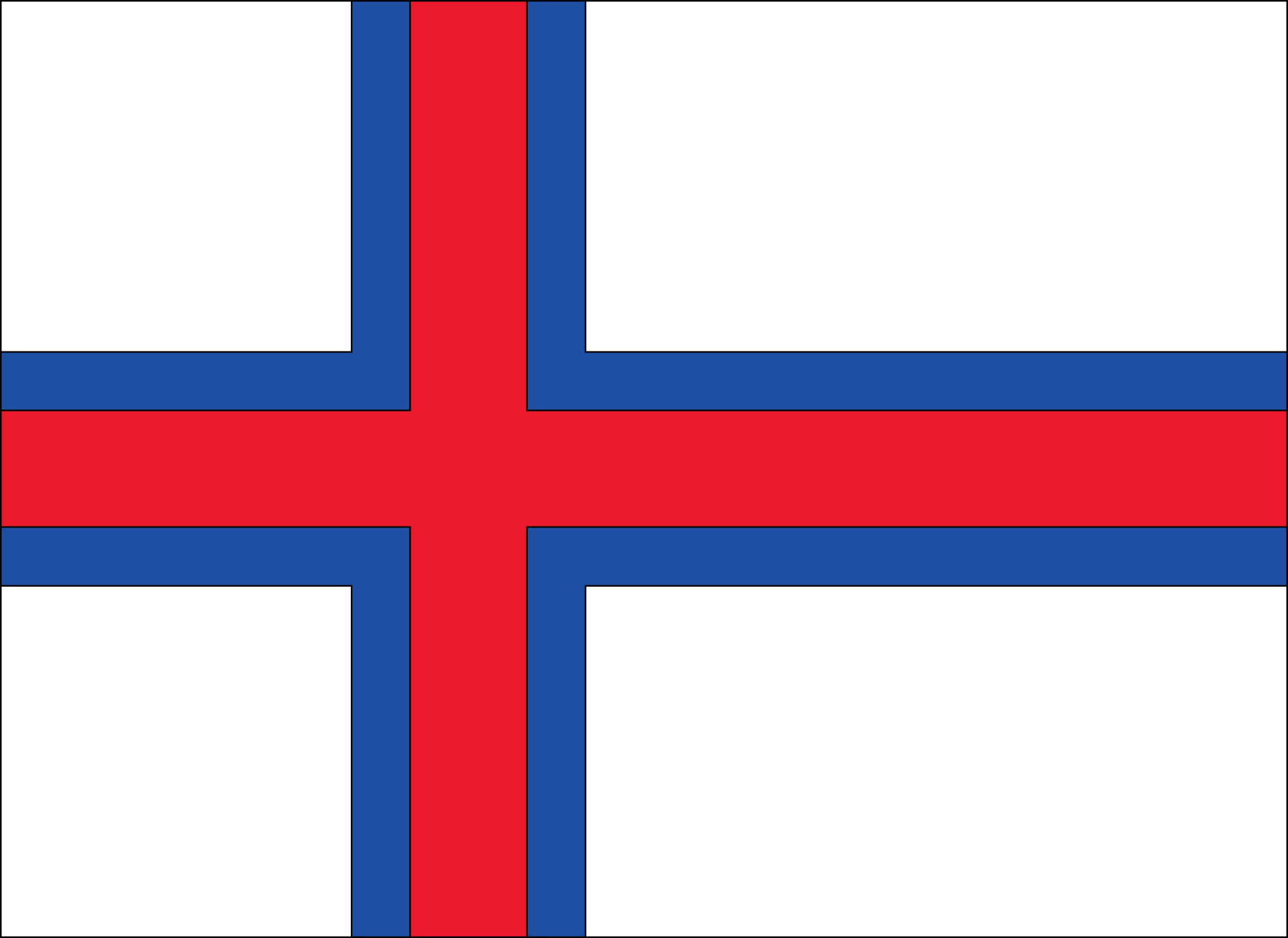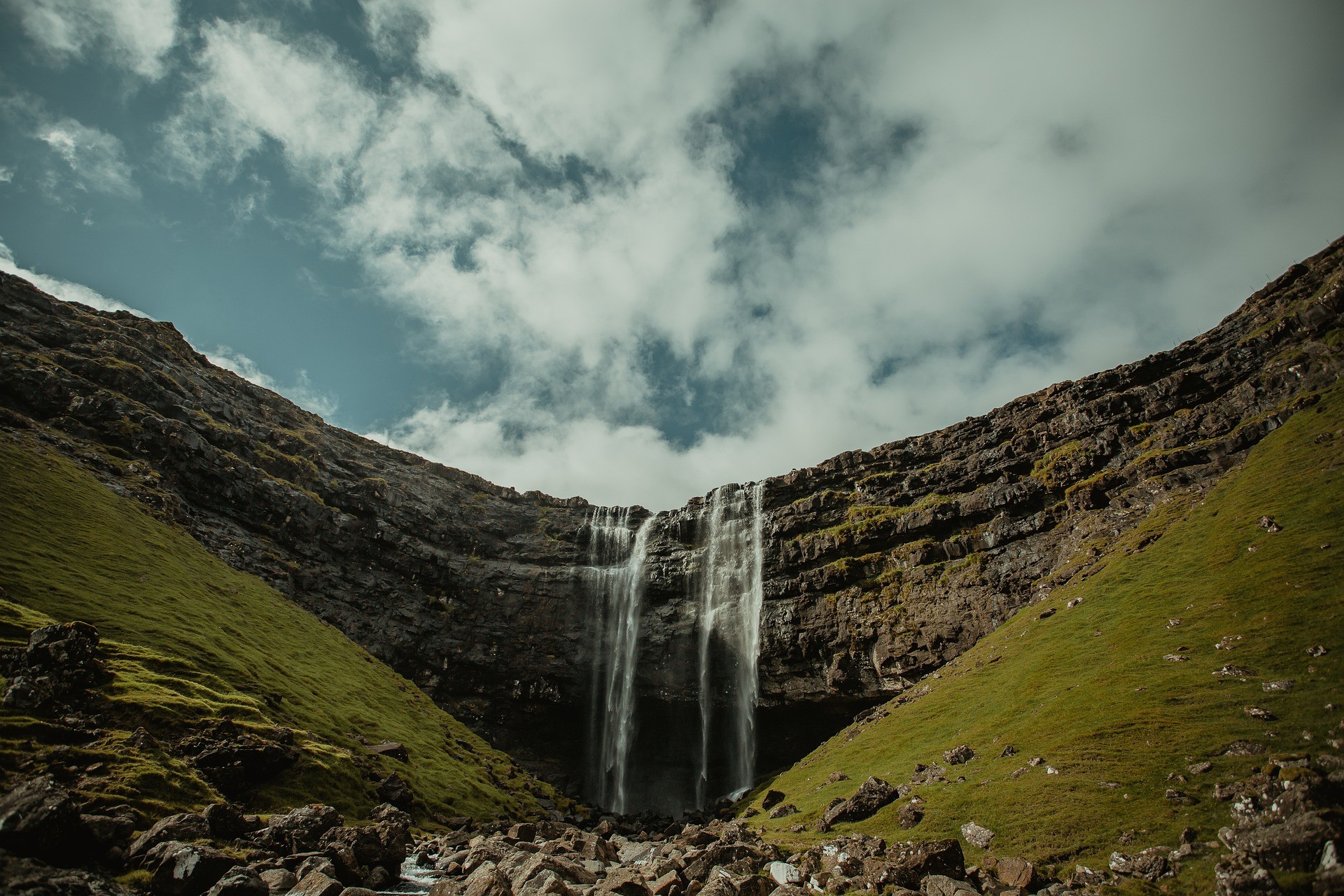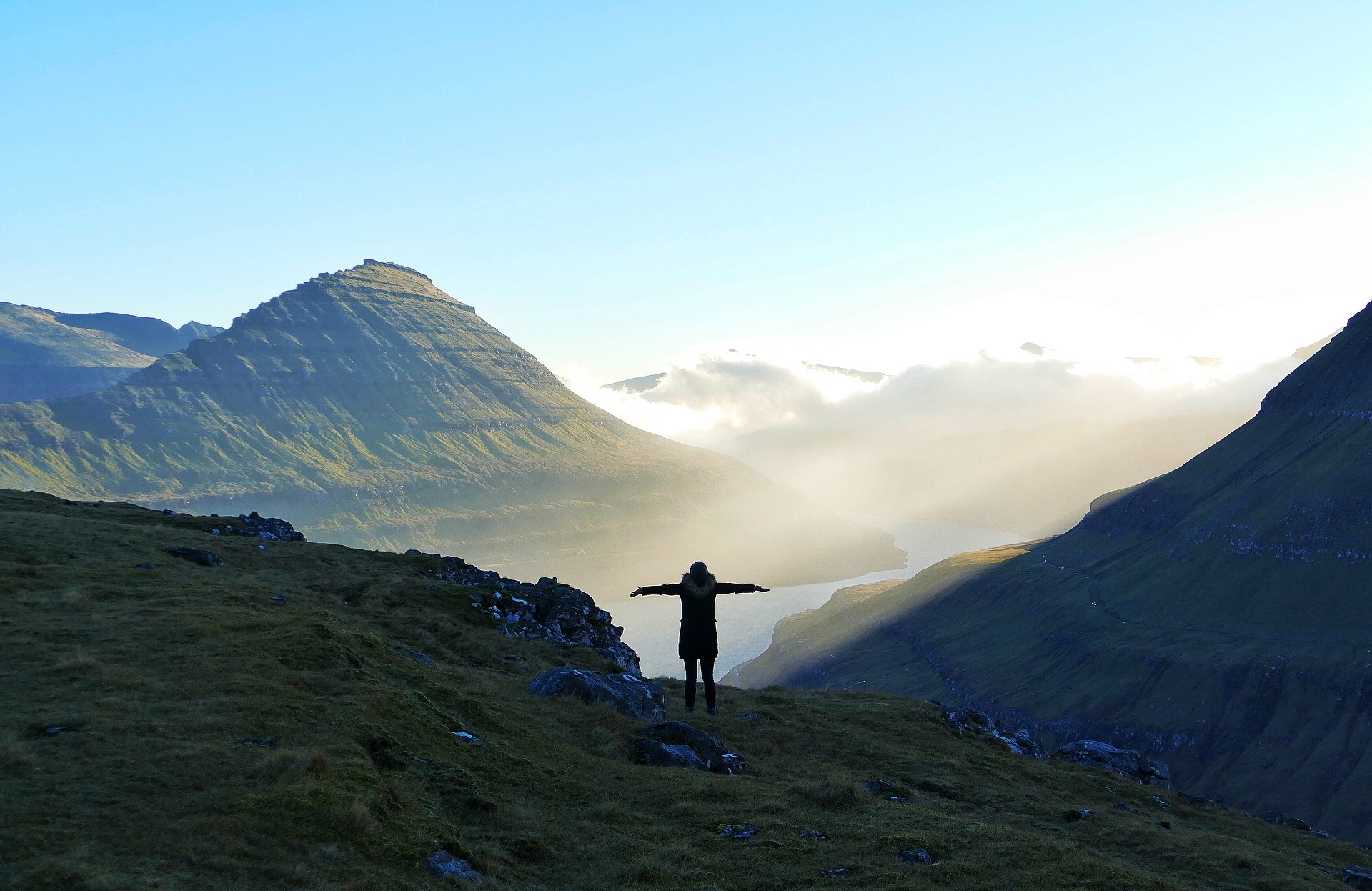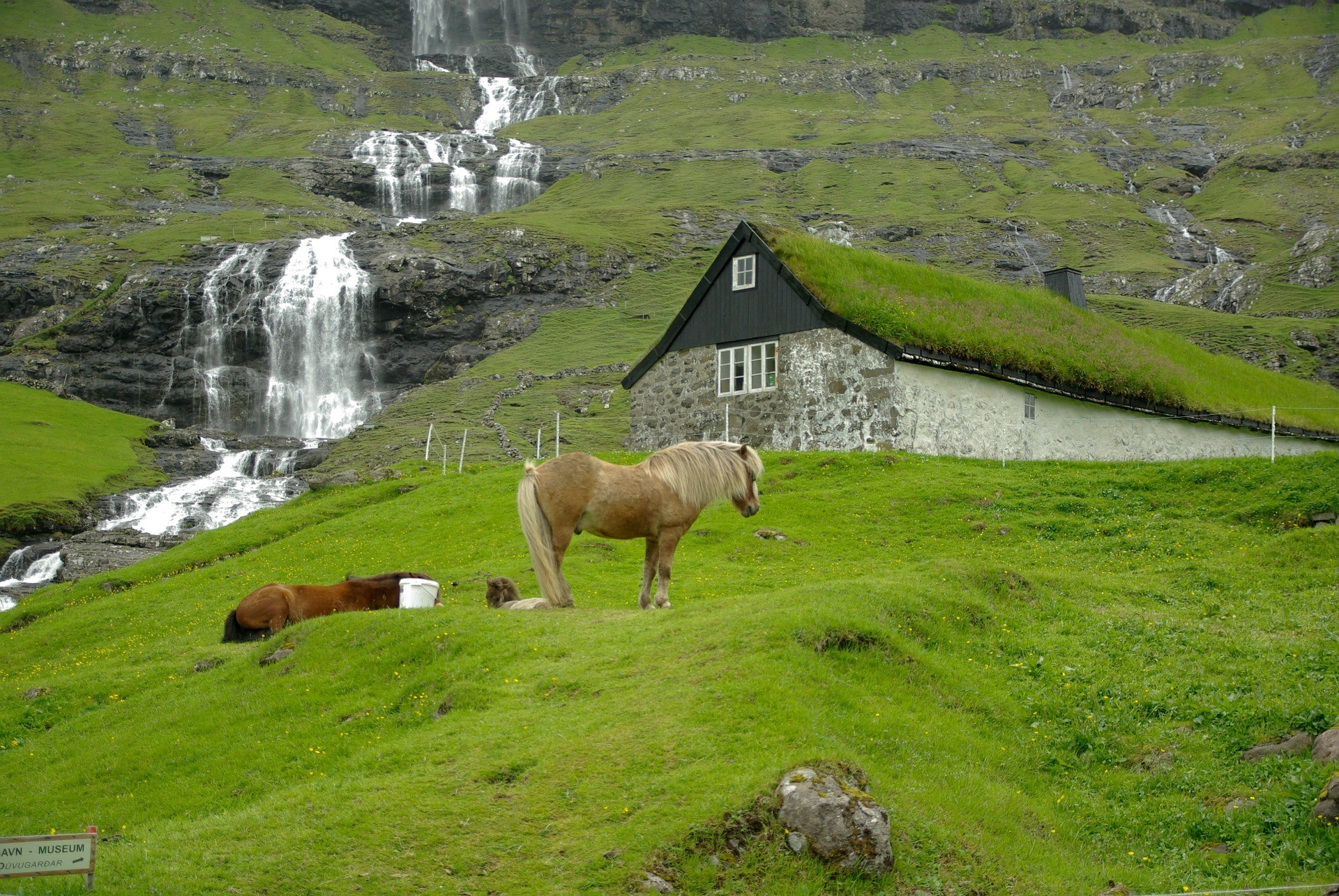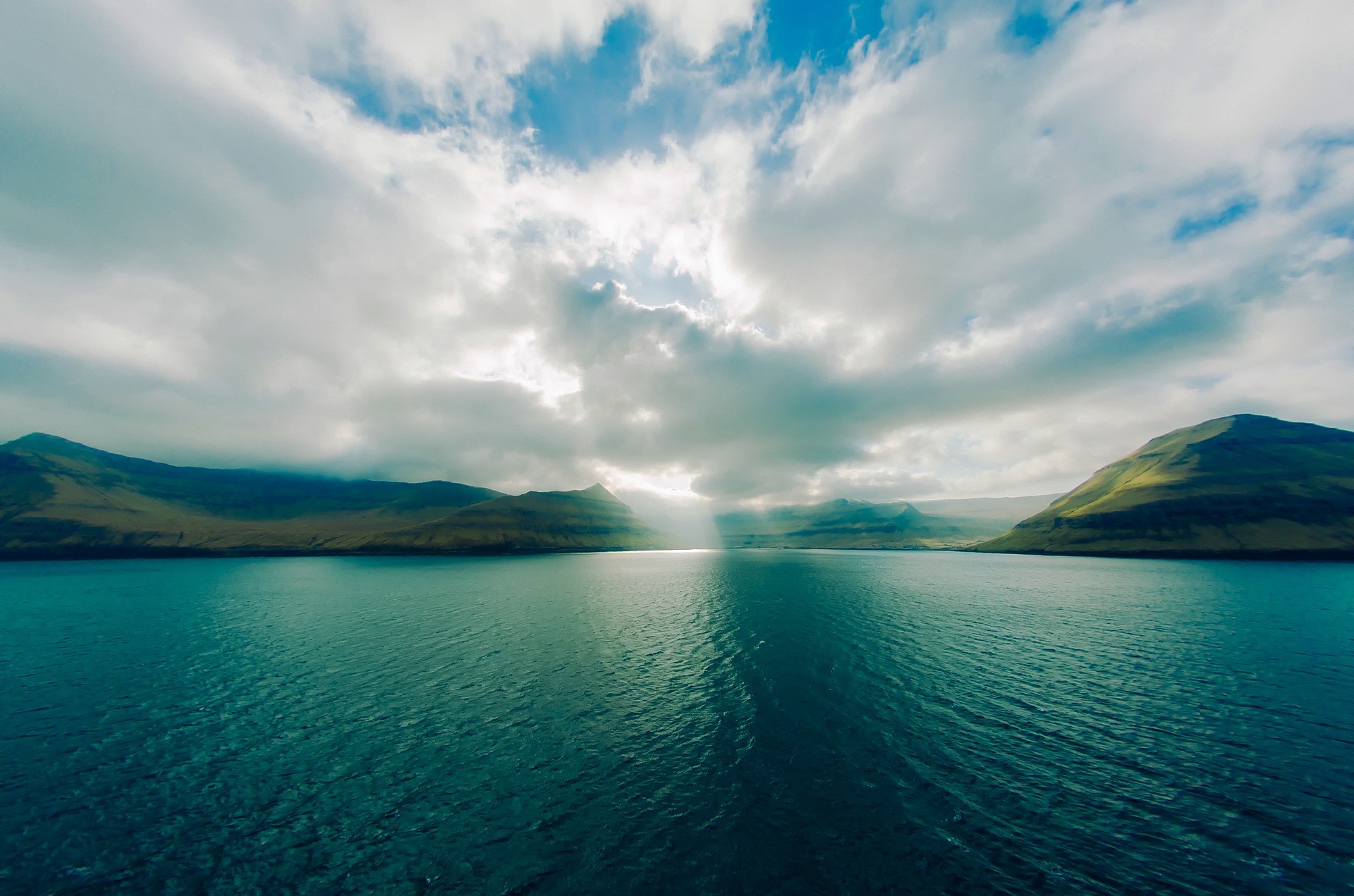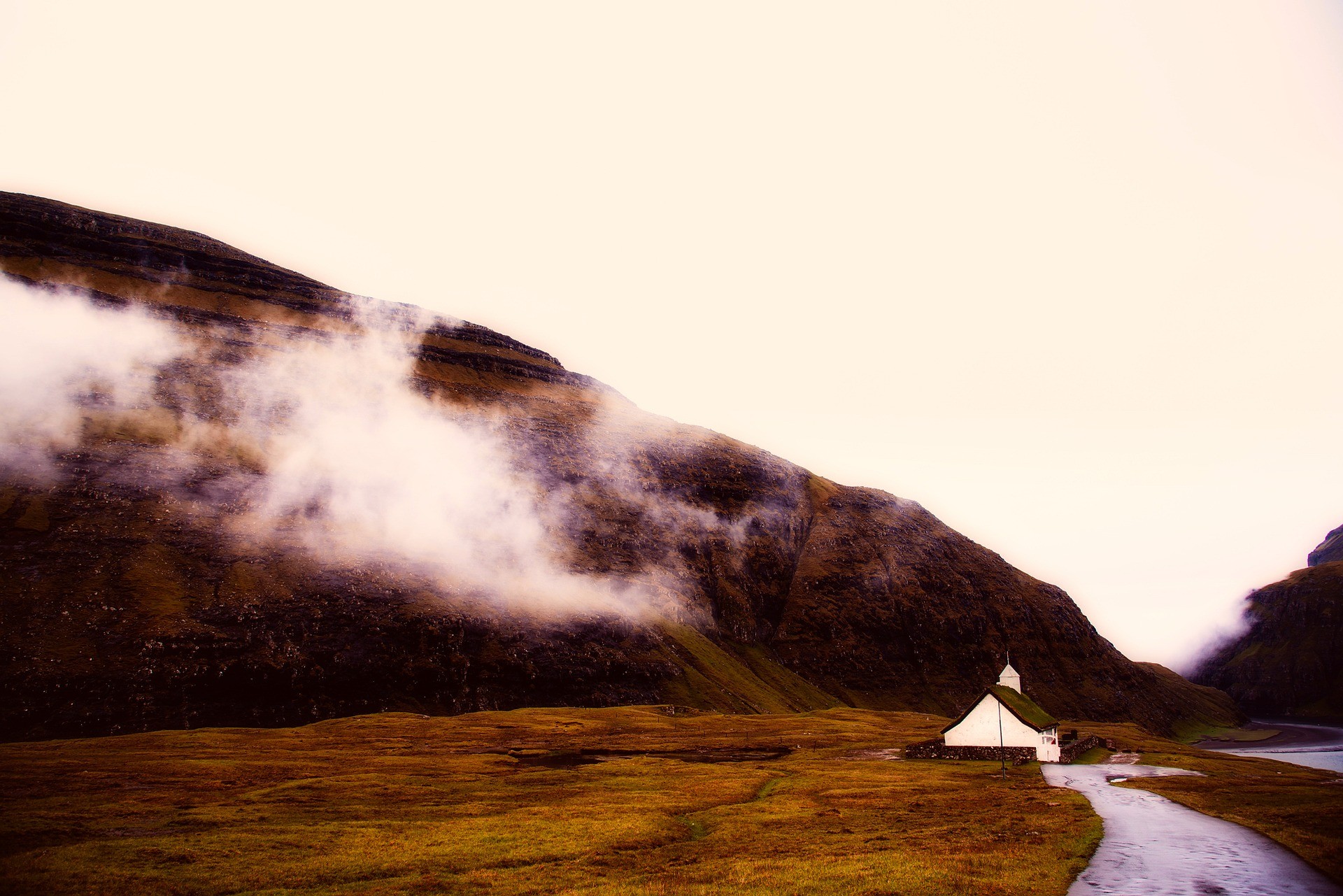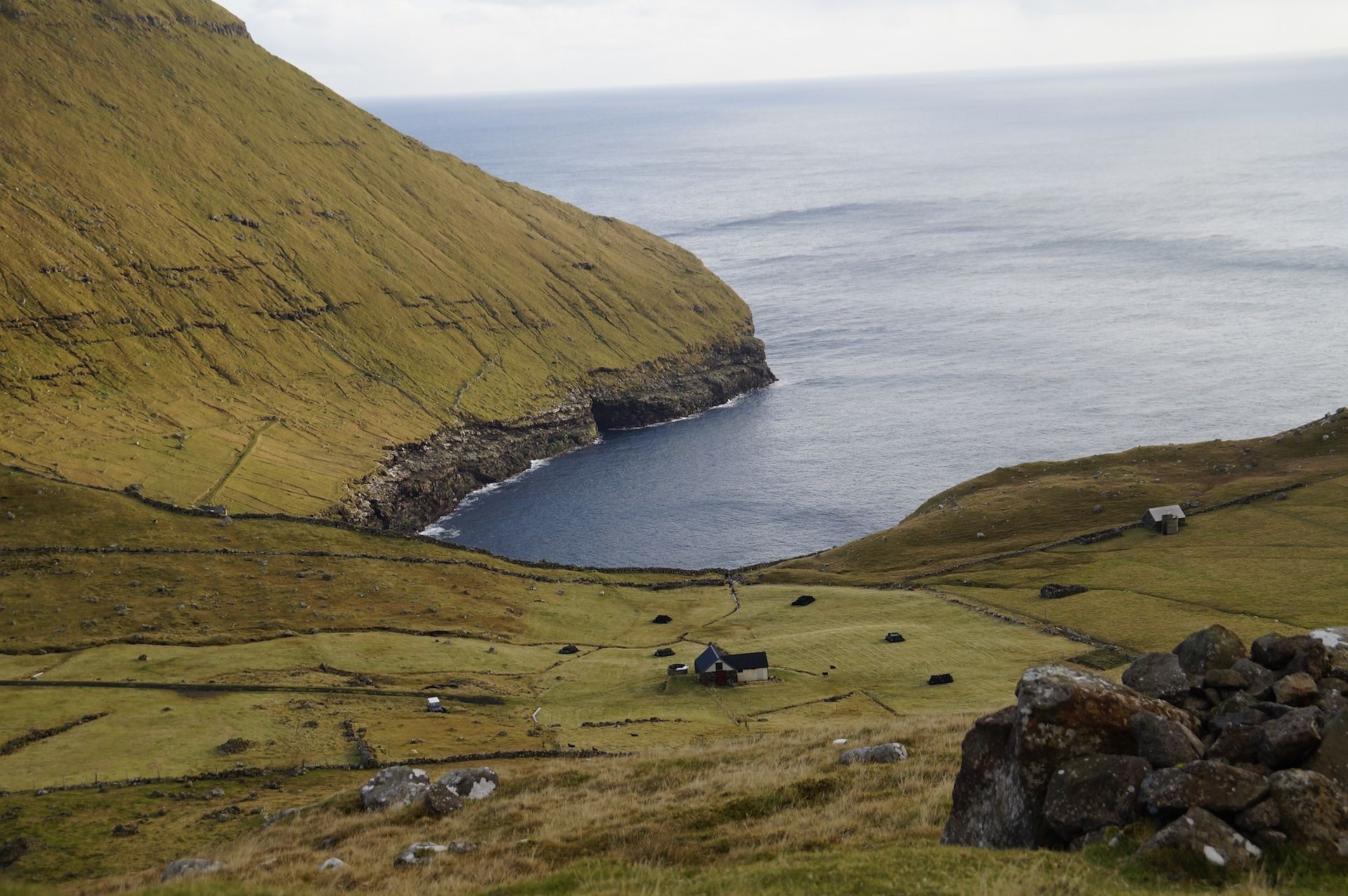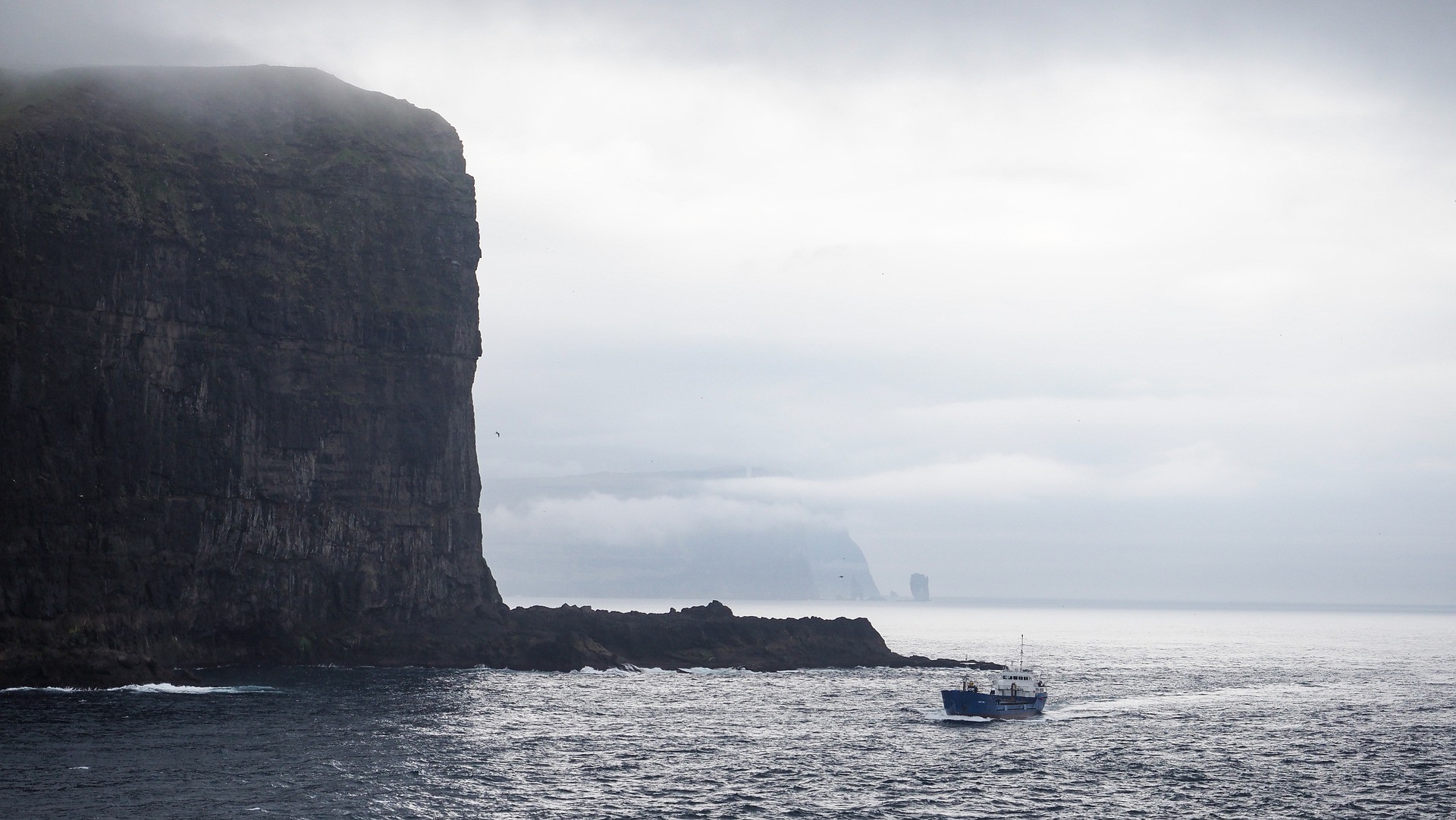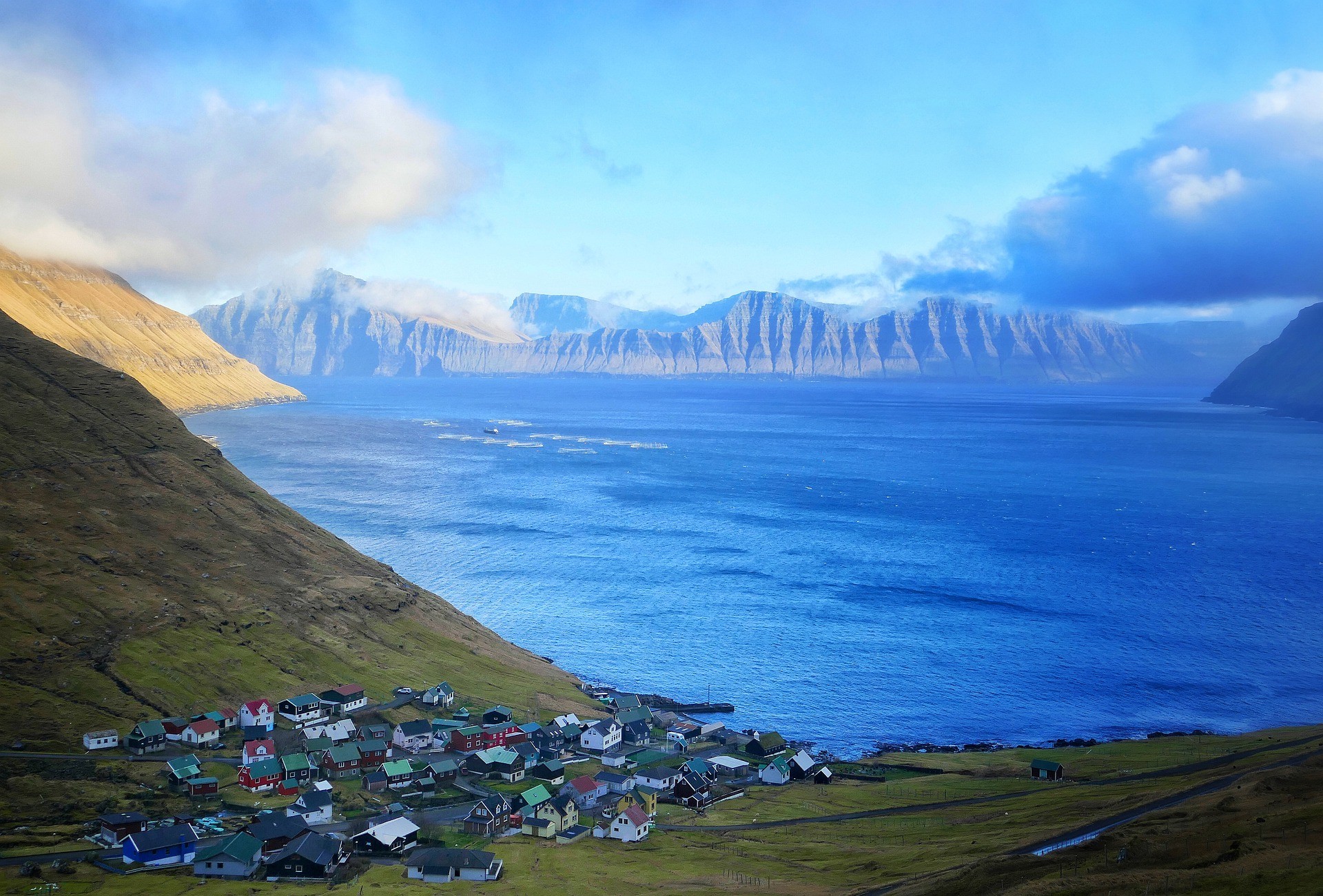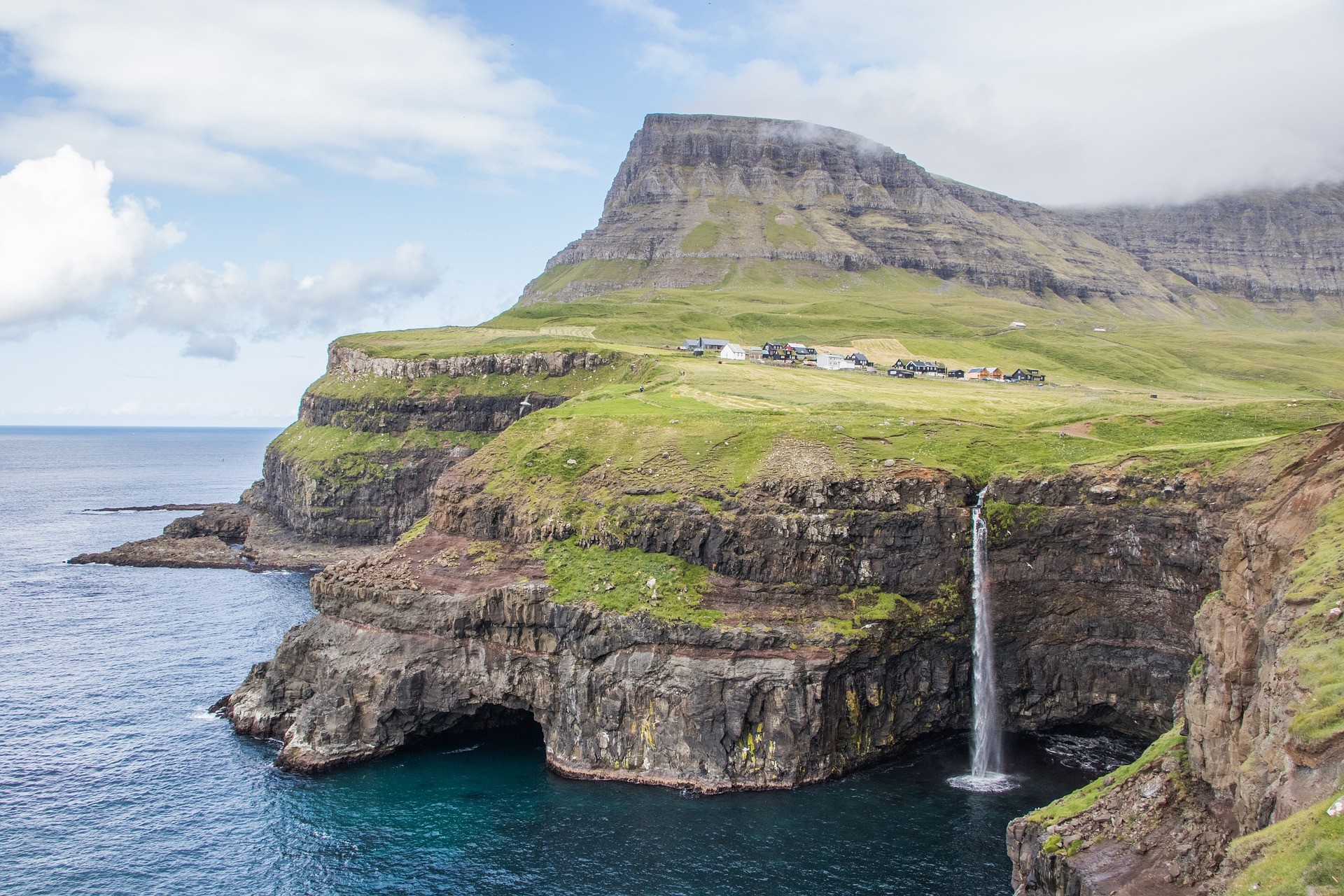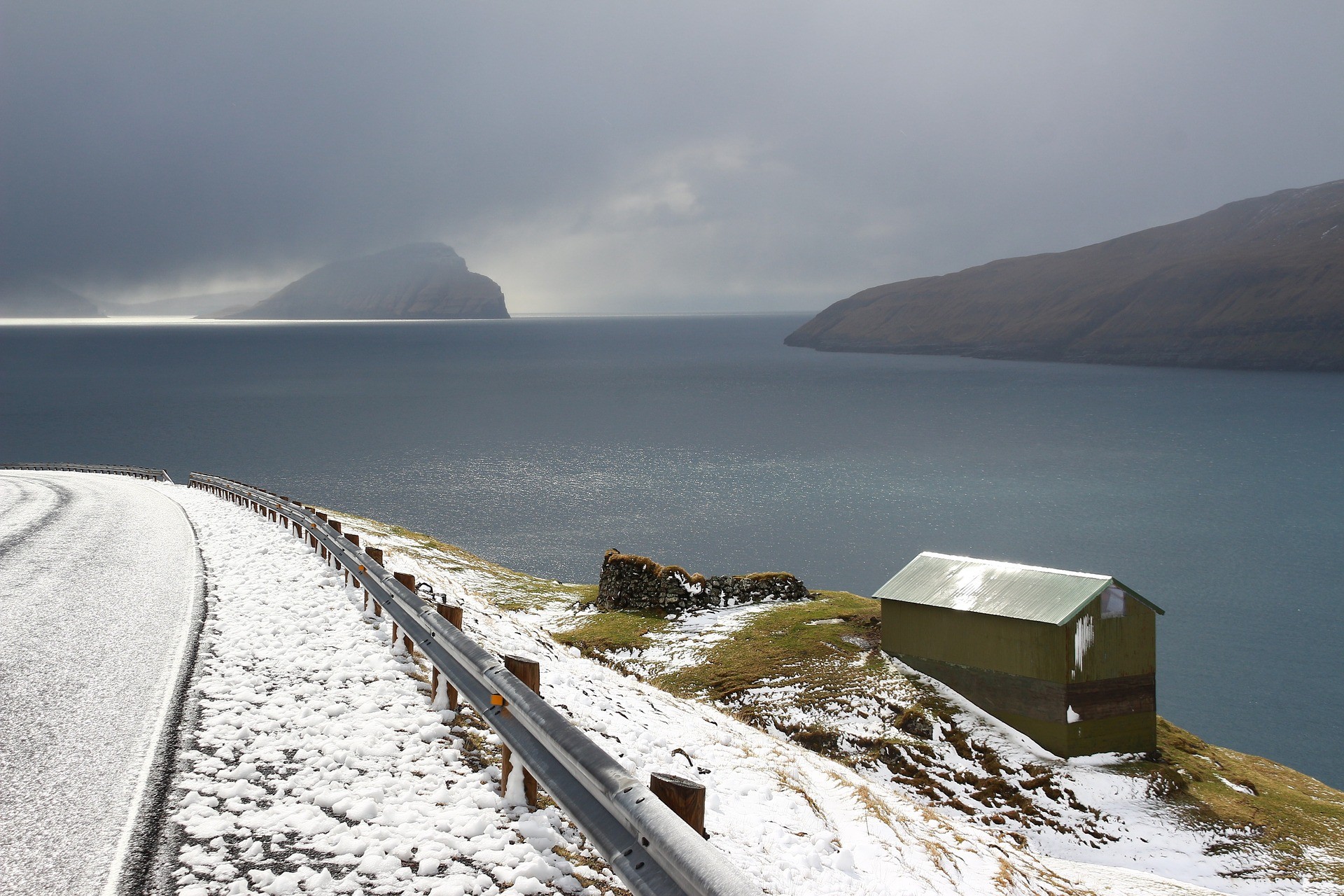Faroe Islands
Faroe Islands
Capital city description
Tórshavn is the capital and largest town in the Faroe Islands, situated on the southeast coast of Streymoy, which is the largest of the 18 islands. The town is named after the hammer-wielding Norse god of thunder, Thor, meaning Thor’s harbor. In Tórshavn, picturesque old emerald-turfed houses and modern buildings stand side by side.
The city offers a rich cultural life, impressive art exhibitions, recreational activities, traditional experiences, excellent hotels and restaurants, and European-style cafés and bars, all nestled in a beautiful landscape.
Climate
The climate on the Faroe Islands is chilly, wet, and precipitating throughout the year. The influence of the ocean narrows the temperature range both between night and day and between winter and summer. The wind frequently blows, and it's moderate or vigorous throughout the year; however, storms are most likely from October to March.
- Spring: March to May
- Summer: June to August
- Autumn: September to November
- Winter: December to February
Languages spoken
The national language and official widely spoken language of the Faroe Islands is Faroese. Danish is the official second language and is taught in schools early. English is also taught in schools and is spoken by most people.
Fun/Fascinating Facts
- Many houses in the Faroe Islands use grass roofs. The reason for using grass roofs is that they protect against rain and provide good insulation. However, while the grass is the roofing material used for centuries, it is being built with modern materials in new buildings today.
- In the Faroe Islands, seagulls and sheep have more population than humans. Approximately 50 thousand people live on 18 islands. Despite this, the number of sheep on the islands is 70 thousand, and about 500 thousand seagulls live here.
- There are only three traffic lights in the Faroe Islands. These traffic lights, which serve about 21 thousand people, are only located in Torshavn.
- There is no prison in the Faroe Islands. Prisoners being held for more than a year and a half are sent to prisons in Denmark.
- In the capital, Tórshavn, transport with city buses is free of charge. Helicopters serving the remote islands are heavily subsidized for everyone, including tourists.
Unique Customs/Traditions
- Faroese have traditional chain dancing. Originally a medieval ring dance, the energetic and theatrical performance blends movement, rhythm, storytelling, and song. Participants hold hands to form a circle and move—two steps to the left; one step back—in time with the singing or chanting of the leader as the more excellent group joins in for the chorus. This style of dance symbolizes the coming together of people from all walks of life, while the song itself recalls fascinating local legend and
- Faroese women are knitting everywhere. At home, in the workplace, on the bus. Even young girls, the busy businesswoman in stilettos. A ubiquitous sight in the schools around the country is girls knitting while attending lectures or during their lunch breaks and free periods. This trend shows that the tradition of knitting is still very much alive. Traditional Faroese knitting is some of the best in the world, and through most of history, the distinctive patterns were handed down through generations by word of mouth. Today, knitting circles often turn to Føroysk Bindingarmynstur, the ultimate Faroese pattern book, and a cultural treasure.
- A characteristic feature of Faroese cuisine is the low consumption of salt and fresh vegetables. The traditional dish of the Culture of the Faroe Islands is the strips of meat withered on the salt sea wind. The most famous are “Rastkoyot,” yog-spik,” “Ryuiskiyot,” and “skerpikyot.”
Popular universities
| Name | Description | |
|---|---|---|
| University of the Faroe Islands | The University of the Faroe Islands is the primary higher education and research institution, its only university, and the foremost knowledge center, located in Tórshavn, the capital of the Faroe Islands. It undertakes research and research-based teaching, providing synergy between research and education to serve the evolving needs and priorities of the Faroes and their wider region. It consists of five faculties: Faculty of Faroese Language and Literature, Faculty of Social Sciences and History, Faculty of Education, Faculty of Science and Technology, and the Faculty of Health Sciences. The university offers bachelor's, master's, and Ph.D.'s. | |
Festivals & Events

Summer Festival
Date: 4-6 August
The Summer Festival is known for its pop-centric style – it caters to a vast music audience that varies significantly in age and music taste and draws the largest crowd for any event every year in the Faroe Islands.
Many world’s most prominent artists, such as Lucas Graham, Roxette, Mika, Ronan Keating, Westlife, and The Scorpions, have performed at this excellent family-friendly music extravaganza.
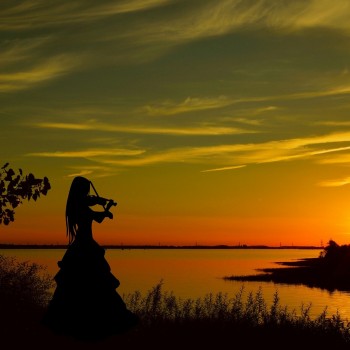
Summartónar Festival
Date: June to August
Summartónar Festival is a collection of concerts, a composers and songwriters festival of classical and contemporary music all across the country during the summer. The Association of Faroese Composers arranged the festival as a continuous, vital dynamo in developing Faroese music focusing on the composition.
The Summartónar festival offers a platform for locals and tourists for Faroese and international composers and summer music. The program ranges from improvisations with numerous world premieres of contemporary folk music to rock concerts and features artists worldwide. There is always a concert somewhere, no matter where you stay on the fantastic 18 Islands of Faroe.

G! Festival
Date: July
G! Festival is a distinctive and wild international music festival outdoors in the Faroe Islands, attracting thousands of spectators, locals, and foreigners, held in the village of Syðrugöta.
They present local and international artists such as Fat Boy Slim, Mø, Rag’n’Bone Man, Harlem Gospel Choir, Specktors, Eivør, Teitur, Marius Ziska, Greta Svabo Bech, Konni Kass, and many others on this unique G! Festival. The Festival offers unforgettable fun experiences, flooded with beers, wild live concerts, sing, dance while having a good time with friends and family until late in the night.

Ólavsøka
Date: 29th July
Ólavsøka is the most significant summer festival in the Faroe Islands. It is a cultural and sports festival with boat races, football matches, and other exciting events like live concerts, Faroese traditional chain dancing, and chorus singing.
Historically, the festival commemorates the death of the King Olafduring a battle in Norway in 1030. It's also a celebration of the arrival of Christianity to Norway and the Faroe Islands.
During the festival, locals wear their traditional costumes. This fantastic annual celebration is a memorable national holiday for Faroese citizens and a great way for visitors to know the country's folklore.

Bindifestivalurin
Date: April
Bindifestivalin or Bindifestivalurin in Fuglafjörður is a unique and excellent festival programmed as living room workshops, providing fascinating lectures on the limitless creative potential craftwork in the coziest environment possible.
Every April, women from all over the world gather in the tiny village of Fuglafjørður to immerse themselves in the world of knitting. This cozy festival offers living room workshops and an eclectic program of engaging lectures in people’s homes.
Attractions / Top Sights
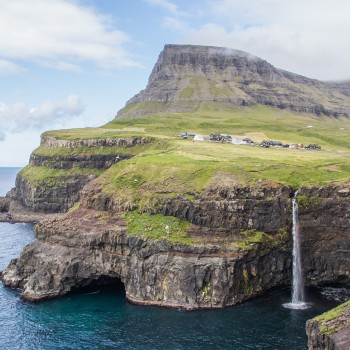
Múlafossur waterfall
When to visit: May to August
The breathtaking Múlafossur waterfall in the village Gásadalur on the Faroe Islands is one of the most beautiful tourist spots on the island, along with the unique Múlafossur Cottages. The cottages are close to various amenities, only a 10-20min drive from the only airport on the islands, shops, and cafes and some of the most astounding Faroese sceneries such as Drangarnir, Tindhólmur, and the lake Sørvágsvatn/Leitisvatn. The Cottages are only a 10-minute walk away from one of the biggest tourist attractions on the Faroe Islands: The Múlafossur waterfall.

Gjógv
When to visit: May to August
Located in the northernmost village on Eysturoy island in the beautiful Faroe Islands is the breathtaking Gjógv village. The settlement is situated at the end of a deep valley with no other village's insight.
Amazingly, Gjógv has an abundance of charm and appeal. The village bears its name from a beautiful 200-meter long gorge. In addition to this stunning village, it is excellent for hiking and walking trails and offers spectacular views of the North Atlantic and the surrounding islands.

Nordic House
When to visit: Between May and August
When to visit: https://www.nlh.fo/
The spectacular Nordic House is a cultural hub in the Faroe Islands. It is a unique center that would allow the Faroese to engage with Faroese and Nordic culture and art and partake in cultural activities. Intricately designed by Norwegian architect Ola Steen, a house is formed green with dragon-like steel struts to provide stability against the strain that the hurricane winds often place on the 2000 m2 turf-covered roof.
Inside the building, an ample lobby space can house several simultaneous activities. There is a café and an open amphitheater. Exhibitions are organized here as well as cultural events. The public areas can be subdivided or combined with light, sound, and space-defining elements

Saksun Church
When to visit: Between May and August
Saksun is a stunningly remote hillside village and is one of the most worthwhile destinations in the country. Known for its tranquil atmosphere, the tiny village of 14 inhabitants offers fantastic views of the surrounding mountains. The village includes a turf-roofed church and a village museum.
Built in 1858, a beautiful church amid such stunning natural background on Stremoy island is a simple and quaint Saksun Church. The scenic location in the middle of wild nature makes it a popular place for tourists and hobby photographers. There are some lovely turf houses in the Dúvugarðar settlement in Saksun and some stunning waterfalls along the mountainsides.
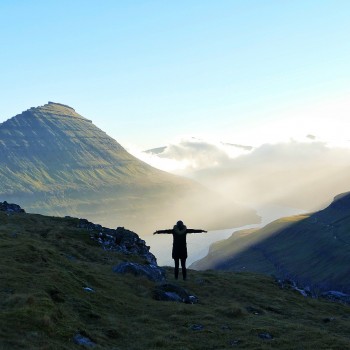
Kalsoy
When to visit: From March to early September
The island of Kalsoy offers genuinely stunning views with 13 peaks and 11 valleys; this island is the perfect place to explore. The hike to the lighthouse at Kallur, the northern tip of Kalsoy, is indeed awe-inspiring. Kalsoy also has a rich birdlife, including puffins, storm petrels, and black guillemots. The breathtaking island of Kalsoy has once featured in the famous James Bond movie No Time to Die in 2021.
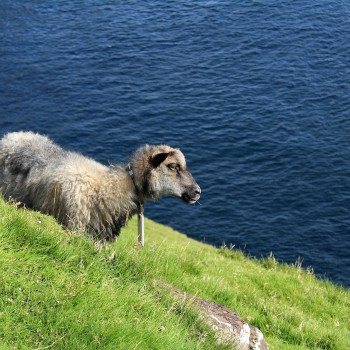
Viðarlundin Park
When to visit: Between May to September
Viðarlundin is one of the enormous parks in the Faroe Islands, located between Varðagøta, Hoydalsvegur, and Gundadalsvegur. It is home to the tiny beautiful pond with countless ducks and swans.
Surrounding in the beautiful places of the park are many remarkable sculptures, including a monument dedicated to the memory of Faroese seamen, who lost their lives at sea during World War II.
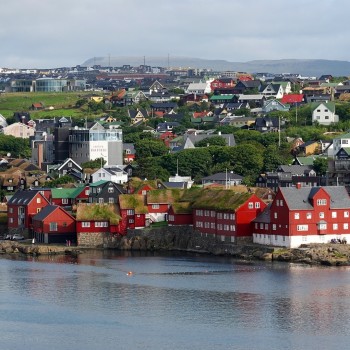
Tórshavn’s Old Town
When to visit: May to early September
Tórshavn’s old town, comprising Reyn and Undir Ryggi, is home to two dozen tiny, black-tarred wooden houses replete with white-framed windows and grass roofs. It was once the home of Tórshavn’s working-class, and still today, people live in these compact tiny wooden houses. Several are named after previous owners, and the houses are crammed closely together – the only stipulation being that it is possible to fasten the house cladding with nails.
Historic Tinganes is the oldest part of Tórshavn and still, today houses the Prime Minister’s office and several government departments. This district has always been the political and commercial heart of the Faroe Islands.
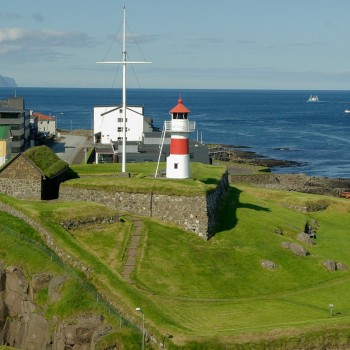
Skansin Fort
When to visit: May to early September
Skansin Fort is a historic fortress in Tórshavn, the capital of the Faroe Islands, built in 1580 by merchant hero Magnus Heinason to protect against pirate attacks of the town. The fort's strategic location offers tourists picturesque views of Tórshavn port, surrounding landscape, and views towards Nólsoy island.
One of the exciting features, which is newly built, is the Skansin Lighthouse that towers over the fortress and shows the correct way for the sailors to get to the capital of the small island nation of the Faroe Islands.















